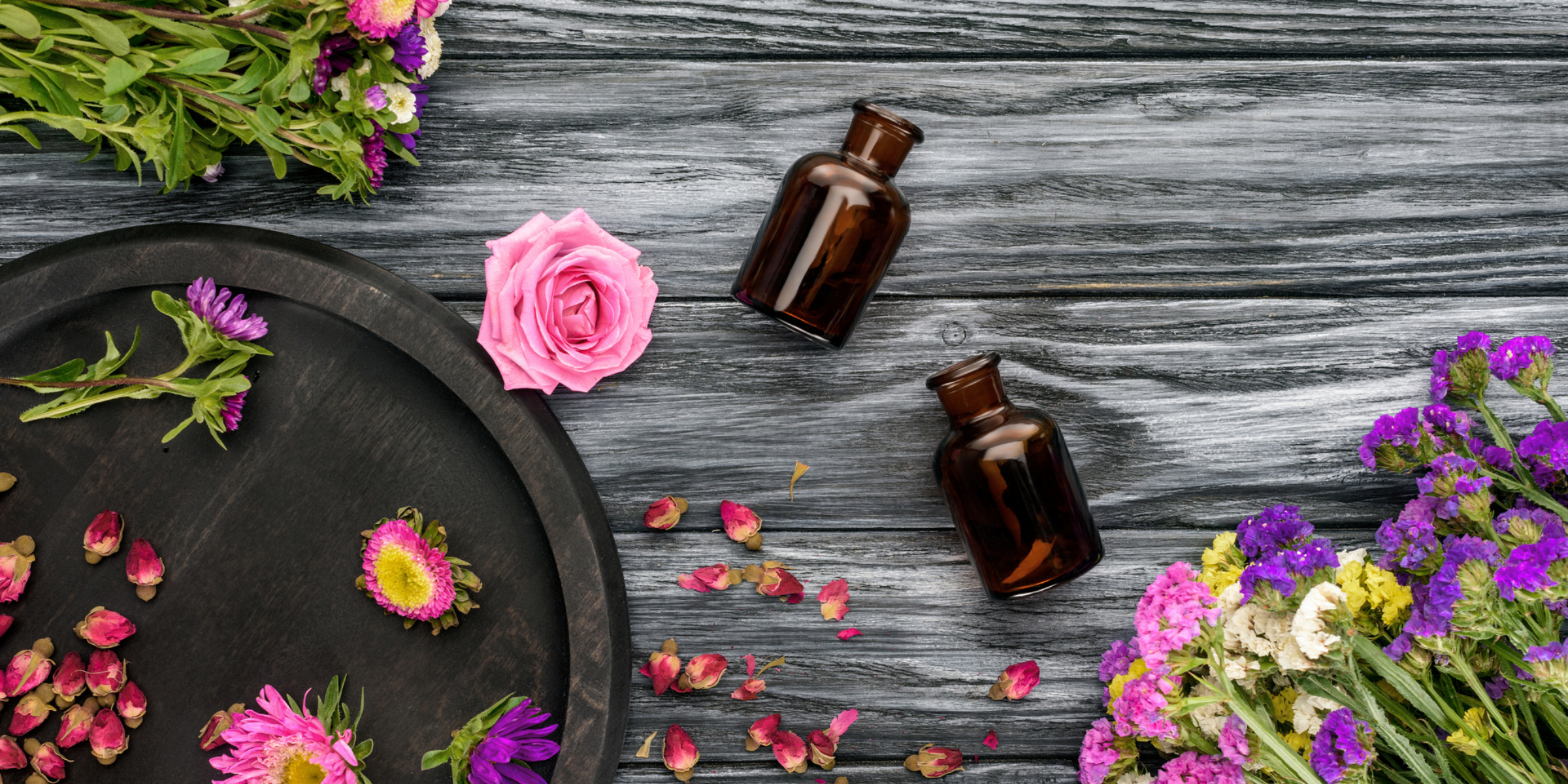Did you know that the global aromatherapy market is expected to reach $3.8 billion by 2026?
That’s right, more and more people are turning to the power of essential oils to relieve stress, improve sleep, and boost their overall well-being. But with so many different oils and methods of use, it can be overwhelming to know where to start.
That’s why we’ve put together this guide on how to use aromatherapy essential oils, so you can get the most out of these natural remedies and feel empowered in your self-care journey.
First, let’s start with the basics. Aromatherapy is the practice of using essential oils to improve physical, emotional, and mental health. These oils are derived from plants and contain potent aromatic compounds that can have a powerful effect on our bodies and minds.
But not all essential oils are created equal, and it’s important to choose the right oils for your specific needs. From there, you can use different methods of application such as diffusing, topical application, and even adding them to your bath or massage oil.
So if you’re ready to explore the world of aromatherapy, let’s dive in!
Understanding the Basics of Aromatherapy
Get ready to discover the fundamental principles behind the art of aromatherapy and uncover the secrets of this ancient practice. Aromatherapy is the use of essential oils extracted from plants to promote healing and well-being.
The benefits of aromatherapy are numerous, including reducing stress and anxiety, improving sleep quality, and boosting immunity. Essential oils have their unique properties, and each one has its therapeutic benefits.
The use of essential oils can be applied in various ways, such as diffusing, inhaling, or applying topically. When using essential oils, it’s important to dilute them and follow the instructions carefully.
Understanding the basics of aromatherapy is crucial in choosing the right essential oils for your needs.
Choosing the Right Essential Oils for Your Needs
To effectively select the appropriate essential oils to meet your specific needs, consider carefully evaluating your desired outcomes and researching which oils have properties that align with those goals. Here are some things to keep in mind when choosing essential oils:
- Consider your personal preferences for scent and aroma.
- Look for essential oil blends that have multiple benefits, such as relaxation and stress relief.
- Choose oils that have properties that align with your desired outcomes, such as lavender for relaxation or peppermint for energy.
- Make sure to purchase high-quality essential oils from a trusted source.
It’s important to remember that everyone’s needs and preferences are different, so it may take some trial and error to find the perfect essential oils for you. Once you have selected your oils, you can begin to explore the many ways to use them for aromatherapy benefits, such as through diffusing.
Diffusing Essential Oils for Aromatherapy Benefits
Let’s dive into how diffusing essential oils can bring the benefits of aromatherapy into your home. Essential oils are highly concentrated plant extracts that have been used for centuries for their therapeutic properties. By diffusing them, you can enjoy their delightful scents and invigorating properties while also improving the air quality in your environment.
To get started with diffusing essential oils, you’ll need a diffuser. There are many types of diffusers available, from ultrasonic to nebulizing, so choose the one that best suits your needs. Essential oil blends can also be easily created for specific purposes, such as calming anxiety or promoting focus. Here’s a table to get you started with some DIY diffuser recipes:
| Purpose | Essential Oils |
|---|---|
| Calming | Lavender, Bergamot, Chamomile |
| Focus | Peppermint, Rosemary, Lemon |
| Energy | Eucalyptus, Grapefruit, Lemongrass |
| Relaxation | Ylang Ylang, Patchouli, Vetiver |
Next, let’s move on to applying essential oils topically for healing and relaxation.
Applying Essential Oils Topically for Healing and Relaxation
Incorporating essential oils into your skincare routine can provide a relaxing and healing experience for your mind and body. Topical application techniques have been used for centuries to promote physical and emotional wellness, making it a popular method for aromatherapy.
When applying essential oils topically, it’s important to dilute them with a carrier oil, such as coconut or almond oil, to prevent skin irritation. You can also create your own blends by combining different essential oils to enhance their benefits.
Some of the benefits of combining essential oils through topical application include improved skin health, reduced inflammation and pain, and enhanced relaxation. For example, lavender essential oil is well-known for its calming properties and has been used to help reduce anxiety and stress. Peppermint essential oil, on the other hand, can help alleviate headaches and muscle soreness. By blending these oils together, you can create a powerful and personalized blend to suit your needs.
To continue your aromatherapy journey, adding essential oils to bath water for a soothing experience is a great next step.
Adding Essential Oils to Bath Water for a Soothing Experience
Indulge in a luxurious bath experience by infusing your water with the calming scent of lavender, allowing your worries to melt away like bubbles in the tub. Adding essential oils to your bath water not only creates a soothing atmosphere but also provides numerous benefits for your mind and body.
The warm water opens up your pores, allowing the essential oils to penetrate deep into your skin and provide therapeutic effects. Essential oils like lavender, chamomile, and eucalyptus are known for their relaxation, stress reduction, and pain relief properties, making them perfect for a bath soak.
To create the perfect aromatherapy bath experience, start by filling your bathtub with warm water and adding a few drops of your desired essential oil. For a stronger scent, mix your essential oils with a carrier oil like coconut or jojoba oil before adding them to your bath water.
You can also add Epsom salts or baking soda to your bath to enhance the therapeutic effects. Soak in the tub for at least 20 minutes, taking deep breaths and allowing the scent to calm your mind and body. As you soak, massage your body with a loofah or scrub to stimulate circulation and exfoliate dead skin cells.
After your bath, pat yourself dry and apply a moisturizing lotion to lock in the therapeutic benefits of the essential oils. Adding essential oils to your bath water is just one way to incorporate aromatherapy into your daily routine for enhanced benefits.
Keep reading to learn how to use essential oils in massage therapy for a more relaxing and rejuvenating experience.
Using Essential Oils in Massage Therapy for Enhanced Benefits
After a long day at work, you may want to unwind and relax your muscles. Adding essential oils to your bathwater is a great way to soothe your senses, but did you know that you can also use them in massage therapy?
Combining oils and pressure points can enhance the benefits of a massage and leave you feeling rejuvenated. Aromatherapy essential oils can be mixed with carrier oils, such as coconut or almond oil, and applied to your skin during a massage.
The combination of the essential oils and the pressure from the massage can help to relieve pain, reduce stress, and improve circulation. Some popular essential oils for massage include Lavender, Eucalyptus, and Peppermint. When used correctly, these oils can provide a relaxing and therapeutic experience.
While essential oils can offer many benefits, it’s important to take precautions and follow safety measures when using them.
Precautions and Safety Measures for Using Essential Oils
Before you start using these powerful oils, it’s essential to understand the safety measures and precautions to ensure a safe and enjoyable experience. Essential oils are potent and concentrated, which means they can cause potential dangers if not used correctly.
Here are some precautions you need to keep in mind before using aromatherapy essential oils:
- Always dilute the essential oils with a carrier oil before applying them to your skin.
- Avoid using essential oils on or near your eyes, nose, or mouth.
- Keep essential oils out of reach of children and pets.
Moreover, some essential oils can cause allergic reactions or skin irritation, so it’s important to do a patch test before using them. Dilution techniques can vary depending on the type of essential oil and the intended use, so it’s crucial to educate yourself before using them.
By following these safety measures and precautions, you can enjoy the benefits of aromatherapy essential oils without any harm.
Now that you know how to stay safe while using essential oils, let’s move on to creating a relaxing atmosphere with aromatherapy essential oils.
Creating a Relaxing Atmosphere with Aromatherapy Essential Oils
Achieving a serene ambiance can be easily accomplished by incorporating the power of concentrated oils into your environment. Aromatherapy essential oils have been used for centuries to promote relaxation and improve sleep quality.
One of the primary benefits of aromatherapy in sleep is that it helps to calm the mind and body, which can lead to a more restful night’s sleep.
To create a relaxing atmosphere, consider using aromatherapy blends for stress relief. Lavender, chamomile, and bergamot are popular oils that are known for their calming properties. You can diffuse these oils in a diffuser or add a few drops to a warm bath to promote relaxation.
Additionally, you can make a homemade room spray by mixing water and a few drops of your favorite essential oils in a spray bottle. Spraying this blend in your room before bed can help to create a peaceful environment and improve your overall sleep quality.
Can Aromatherapy Essential Oils Be Used for Massage Purposes?
Yes, aromatherapy essential oils can absolutely be used for massage purposes. When combined with the aromatherapy massage technique, these oils can enhance relaxation and promote overall wellness. The gentle scents and therapeutic properties of essential oils can provide a soothing and rejuvenating experience during a massage session.
Conclusion
Congratulations, you’re now equipped with the knowledge to use aromatherapy essential oils to improve your physical, emotional, and mental well-being.
Remember, the key to successful aromatherapy is choosing the right essential oils for your specific needs. Whether you’re looking to reduce stress, alleviate pain, or boost your immune system, there’s an essential oil out there that can help.
Diffusing essential oils is a simple and effective way to enjoy the benefits of aromatherapy. You can also apply essential oils topically, add them to your bath water, or use them in massage therapy.
But as with any type of therapy, it’s important to take precautions and follow safety measures to prevent any adverse reactions.
So go ahead, indulge in the wonderful world of aromatherapy, and let the soothing scents of essential oils transport you to a state of blissful relaxation. It’s a game-changer, and it might just change your life forever!




